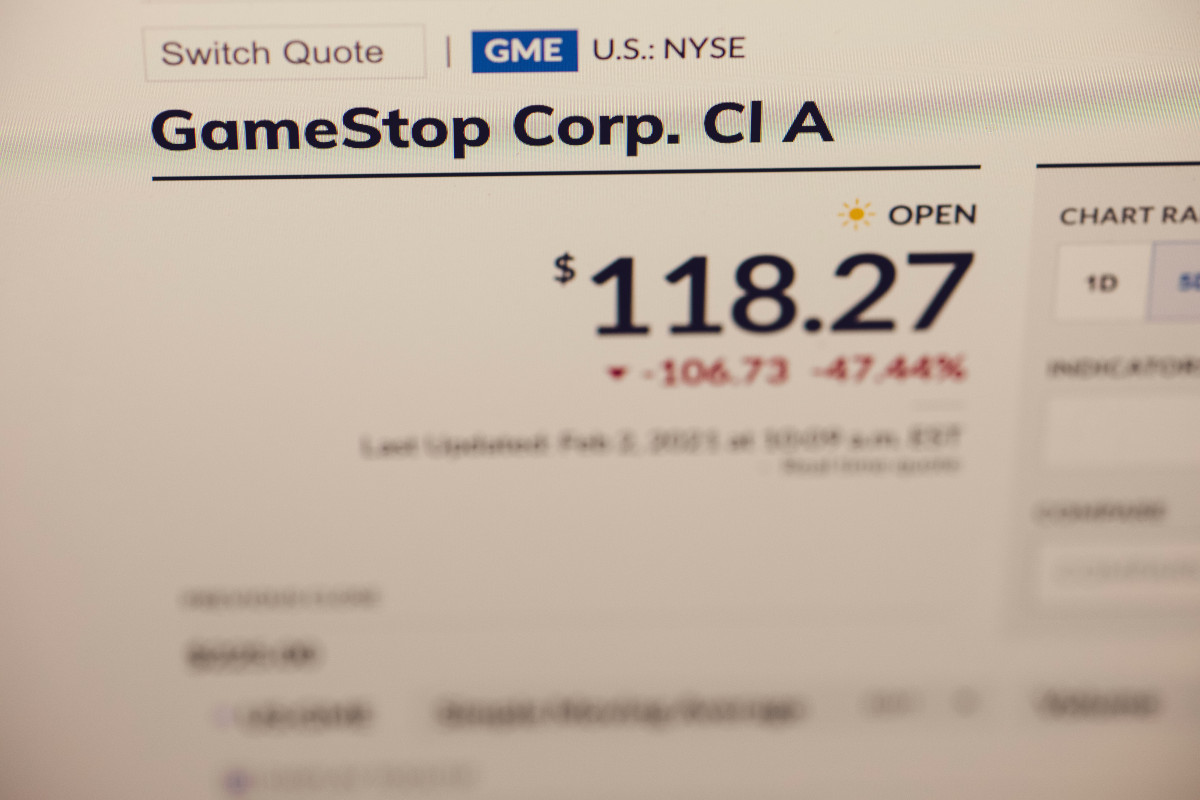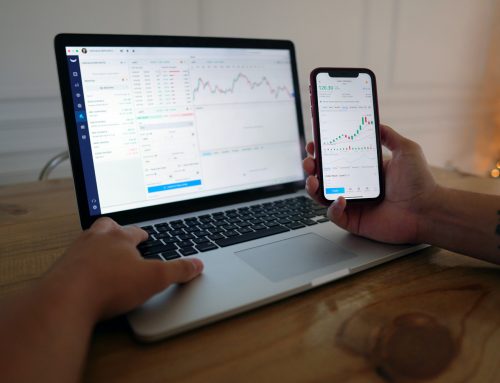New investors come to a crossroads in choosing their strategy: buy the dip vs buy and hold. Each comes with its distinct advantages and challenges, but only one is right for you. So, which is it?
Are you someone who jumps in when the market seems to be on sale, eager to capitalize on temporary price fluctuations and earn high profits? Or, do you find comfort in a longer-term perspective, letting your investments grow gradually over time with a more hands-off approach?
We’re going to dive deeper into the nuances of each approach to help you get a better sense of which aligns with your goals and personality.
Then, we’ll introduce you to an intuitive stock analysis software that can help you maximize profits, minimize losses, and spend less time in front of your screen stressing over decisions – regardless of which strategy you choose!
What is Buying the Dip?
First things first, what is buying the dip? This refers to an investment strategy where investors purchase stocks after a decline in prices, capitalizing on the belief that the drop is a temporary setback, and prices will rebound.
Essentially, it’s like buying your favorite brand when it goes on sale. The market might react to short-term negative news, causing stock prices to plummet, but for investors who have done their homework, these moments can offer lucrative buying opportunities.
Should you buy stocks when they are down, though? After all, actually finding “the dip” is easier said than done. Our guides on when to buy stocks for beginners, the best day of the week to buy stocks, and the best time of day to buy stocks are all worth reading for insights on this challenge.
You can learn more about how to buy the dip and how to time the market in our blog if you’re interested in seeing what this strategy entails. But let’s unpack the pros and cons below to help you get a sense of what makes buying the dip so enticing.
Pros
- Potential for Higher Returns: By purchasing stocks when they’re undervalued, there’s an opportunity to buy low and sell high, securing more profit along the way.
- Short-term Gains: Traders can realize profits in a shorter timeframe if the stock rebounds quickly after a dip. In some cases, you can buy and sell stocks the same day to make a consistent income!
- Strategic Positioning: Buying the dip allows traders to enter or increase positions at a favorable price when taking a long-term position in fundamentally strong companies.
Cons
- Requires Active Monitoring: This strategy often necessitates keeping a close eye on the market, news, and other factors that influence stock prices.
- Risk of Further Decline: There’s no guarantee that after buying the dip, the stock won’t continue to fall.
- Emotional Strain: The uncertainty of the market’s short-term movements can be stressful, leading to potential hasty decisions.
Many of these can be avoided through careful analysis and using a tried-and-true system – more on that later. Let’s introduce the other half of the buy the dip vs buy and hold debate now.
What is Buying and Holding?
Buying and holding, often referred to as a “long-term investment strategy”, involves purchasing stocks and retaining them for an extended period, regardless of market volatility.
The underlying belief is that, in the long run, the stock market will provide a good rate of return despite periods of decline or instability.
Investors adopting this strategy bank on the historical upward trajectory of the stock market and the ability of good stocks to rebound and grow over time. This approach is commonly used by those trying to reap the advantages of investing early for retirement.
That being said, buying and holding stocks without any intervention puts your portfolio at risk. You take on losses during down markets when you could convert to cash for a period and buy back in when conditions become more favorable.
Still, those who swear by buying and holding believe that in the long run, those incremental losses pale in comparison to the long-term results and stress-free, hands-off approach to investing.
Pros
- Historical Performance: The stock market has generally trended upward over the decades, providing long-term investors with consistent returns.
- Reduced Stress: Investors often experience less stress and anxiety without the need to constantly monitor the market for short-term fluctuations.
- Tax Efficiency: Holding stocks for over a year before selling often qualifies investors for a lower capital gains tax rate in many jurisdictions.
- Compounding Returns: Investors can benefit from compounding and reinvesting dividends or earnings, allowing their wealth to grow exponentially over time.
Cons
- Opportunity Cost: Investors will miss out on lucrative short-term opportunities elsewhere by staying committed to certain stocks.
- Potential for Stagnation: Not all stocks rebound. Some might remain stagnant or decline over the long term, leading to lost potential earnings.
- Requires Patience: While the market generally trends upward, there can be prolonged periods of downturn, requiring investors to have a robust risk tolerance.
Buy the Dip vs Buy and Hold: Which Strategy is Right For You?
In the end, choosing to go with a buy the dip vs buy and hold strategy will require you to assess your unique goals, personality, and commitment level to investing. We’ll help you weigh all this below to make a clear, confident decision one way or the other.
Evaluating Your Investment Goals
First, ask yourself: what am I investing for? If you’re targeting long-term financial milestones, such as retirement or funding education, a ‘buy and hold’ strategy might suit you, as it rides out market volatility over years.
However, if you aim for shorter-term gains and enjoy staying actively engaged in the market, ‘buy the dip’ could be more appealing. This strategy allows you to earn income in the here and now, supplementing a full-time job or in some cases serving as your sole source of income.
Analyzing Your Risk Appetite
Both strategies come with inherent risks. ‘Buy and hold’ demands a resilience to bear with potential short-term losses in anticipation of long-term gains. You’ll have to stay strong as economic downturns take their toll on your portfolio.
In contrast, ‘buy the dip’ requires the agility to act on market downturns and the acumen to determine a genuine dip from a prolonged downturn. Understand your comfort level with these risks before deciding.
Assessing the Time Commitment
How much time can you realistically dedicate to your investments? ‘Buy the dip’ requires constant market vigilance, waiting for those opportune moments to invest.
This might sound time-consuming as you’re constantly analyzing stocks with swing trading indicators like moving averages. And once you’ve found your stock to trade, you then have to toil over analysis to find the dip and monitor your position to figure out when to take profits on stocks.
But bear in mind that we’re still going to introduce you to software that will simplify all this and free you from the shackles of complex technical analysis.
That being said, while ‘buy and hold’ demands periodic reviews, it’s undoubtedly a more hands-off approach than buying the dip. Once you’ve made your investment choices, you can step back and let time do its work.
Factoring in How You Handle Market Volatility
Finally, self-reflect on your emotional response to market swings. If watching your portfolio’s value fluctuate daily stirs anxiety, ‘buy and hold’ might be preferable, allowing you to overlook short-term declines.
Conversely, if you’re unfazed by volatility and can make objective decisions during downturns, ‘buy the dip’ could be right up your alley. This is also a better strategy for those who are simply not willing to watch their portfolio dwindle down in economic downturns.
So, Which is Better: Buy the Dip vs Buy and Hold?
At this point you’re probably already leaning towards one strategy over the other. You now know that the best approach largely depends on your individual preferences, investment goals, and tolerance for risk – so it’s just a matter of sitting down and reflecting on these considerations.
If you’re someone who enjoys active engagement with the market and possesses a higher risk tolerance, “Buy the Dip” might be more suitable.
However, if you’re looking for a more passive investment approach and want to minimize short-term market stress, “Buy and Hold” could be the better option.
You can consider other strategies as well as we have similar comparison guides for dollar cost averaging vs timing the market, timing the market vs time in the market, buy and hold vs market timing, swing trading vs day trading, growth investing vs value investing, position trading vs swing trading, scalping vs swing trading, trend trading vs swing trading, and more.
We hope you have a solid grasp on whether a buy the dip vs buy and hold strategy is right for you at this point. But regardless of which strategy you choose, one thing is certain: you can set yourself up for smooth sailing across the vast sea of the stock market by leveraging VectorVest.
Whether You Buy the Dip or Buy and Hold, VectorVest Can Help You Save Time and Avoid Costly Errors!
Whether you’re an active trader always on the lookout for the next dip or someone who’s committed to the long-term with a buy and hold approach, VectorVest empowers you to win more trades with less work and stress.
It’s considered the best app for stock analysis after consistently outperforming the S&P 500 index by 10x over the past 20 years and counting. But how does it work? By consolidating all the information you need to make clear, calculated investment decisions into 3 simple ratings.
These are relative value (RV), relative safety (RS), and relative timing (RT). Each sits on its own scale of 0.00-2.00 with 1.00 being the average and allows for quick and easy interpretation. Better yet, the system issues a clear buy, sell, or hold recommendation for any given stock at any given time based on these ratings.
And, you never have to worry about what stock you’re going to trade next. The best stocks for swing trading or buying and holding are just a click away through the system’s screeners. Whether you’re trying to learn how to pick stocks for day trading, how to find stocks to swing trade, or how to find options to trade, there’s a screener in place for you.
Still not convinced? Get a grasp of what makes the system so powerful with a free stock analysis today. We’re confident this is the best swing trading platform and once you get the opportunity to use it firsthand, we’re certain you’ll agree.
Bringing Our Conversation on Buying the Dip vs Buying and Holding Stocks
Whether you decide to take the hands-off long-term approach of buying and holding stocks or you chase profits and preserve capital through buying the dip, we hope this guide leaves you with clarity as to which best suits you.
As we bring this conversation on buy the dip vs buy and hold strategies to an end, one thing remains clear: precision is paramount irrespective of strategy. Both strategies have merits, but the key is consistency and timely decisions. VectorVest streamlines this journey, ensuring fewer missteps and maximizing returns.
Our blog has more resources to set you up for success as an investor. Learn how to pick a stock, what happens to the stock market during a recession, swing trading patterns, where to put retirement money after retirement, stock market sentiment, and more.
Or, make a decision that will shift your financial future today. Set up your desktop or mobile stock advisory and discover a profound approach to trading stocks like never before – without the guesswork, time commitment, or human error!








Leave A Comment